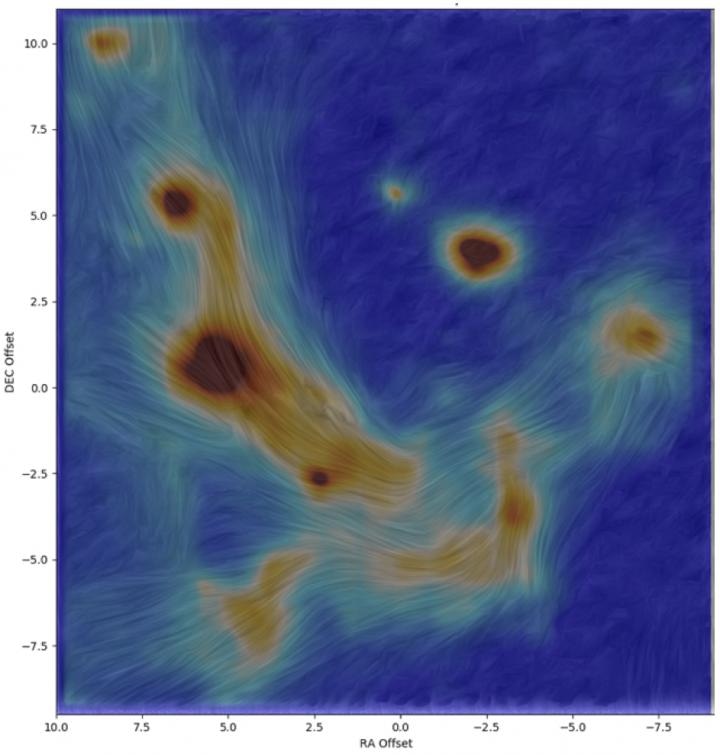Feb 26 2018
 This image is a new high-resolution map of the magnetic field lines in gas and dust swirling around the supermassive black hole at the center of Earth’s galaxy. CREDIT: Oxford University/Royal Astronomical Society/UTSA.
This image is a new high-resolution map of the magnetic field lines in gas and dust swirling around the supermassive black hole at the center of Earth’s galaxy. CREDIT: Oxford University/Royal Astronomical Society/UTSA.
A new research headed by Pat Roche, professor of astrophysics from The University of Oxford, and Chris Packham, associate professor of physics and astronomy from The University of Texas at San Antonio, has disclosed a fresh high-resolution map of the magnetic field lines in dust and gas circulating around the supermassive black hole located at the center of Earth’s galaxy.
The researchers developed the map, first of its kind, by using the CanariCam infrared camera fixed to the Gran Telescopio Canarias on the island of La Palma.
This collaborative work is an exciting step forward in our collective efforts to gain a greater understanding of our own galaxy and the super-massive black hole at the center of it. It also demonstrates the importance of access to the largest telescopes using advanced cameras/techniques.
Chris Packham, Associate Professor, Physics and Astronomy, University of Texas at San Antonio
The gravitational fields of black holes are so powerful that even light cannot evade their hold. A black hole is found to be positioned at the center of nearly every galaxy, including the Milky Way, Earth’s own galaxy. The speed of stars moving around the black hole is nearly 800 million km/hour, suggesting that the mass of the black hole is at least a million times that of Earth’s Sun. Based on the way the material travels, a specific portion of it might finally be seized and engulfed by the black hole.
Visible light emitted from sources located at the center of Earth’s galaxy, Milky Way, is obstructed by clouds of dust and gas. Infrared light, and also radio waves and X-rays, readily pass through this concealing material, hence astronomers use this to observe the region with higher clarity. CanariCam integrates this with a polarizing device that favorably filters light with the specific properties linked to magnetic fields.
This work, in addition to its scientific relevance, is very important to the advancement of the Ph.D. physics and astronomy program here at UTSA, since it involves students in cutting edge research.
Miguel Jose Yacaman, Professor and Lutcher Brown Endowed Chair, UTSA Department of Physics and Astronomy
Focusing on the supermassive black hole, the fresh infrared map incorporates a region of nearly one light year on either side. The image displays the infrared light intensity and also traces magnetic field lines inside filaments of hot gas and warm dust grains, which look here like thin lines resembling brush strokes in a painting.
The length of the filaments is several light years. The filaments seem to converge nearer to the black hole and might specify the place of convergence of orbits of streams of dust and gas. An evident attribute connects a few of the brightest stars at the center of the galaxy. Regardless of the strong winds that flow from such stars, the filaments stay intact, secured by the magnetic field inside them. In other places, the alignment of the magnetic field with the filaments is not so clear.
The fresh investigations provide astronomers highly elaborate information on the link between the dusty filaments and the bright stars. Although there is no clear knowledge of the origin of the magnetic field in this region, it is possible that a smaller magnetic field is presented as the filaments are lengthened by the gravitational impact of the stars and the black hole at the center of the galaxy.
Big telescopes like GTC, and instruments like CanariCam, deliver real results. We’re now able to watch material race around a black hole 25,000 light years away, and for the first time see magnetic fields there in detail.
Pat Roche, Professor of Astrophysics, University of Oxford